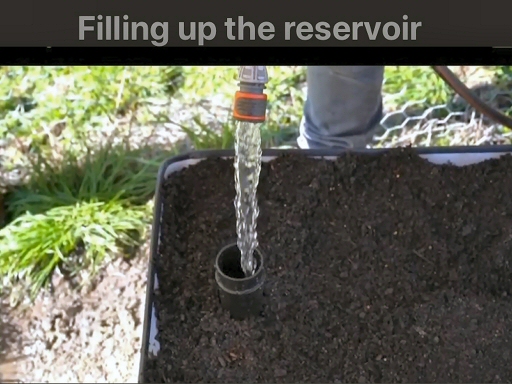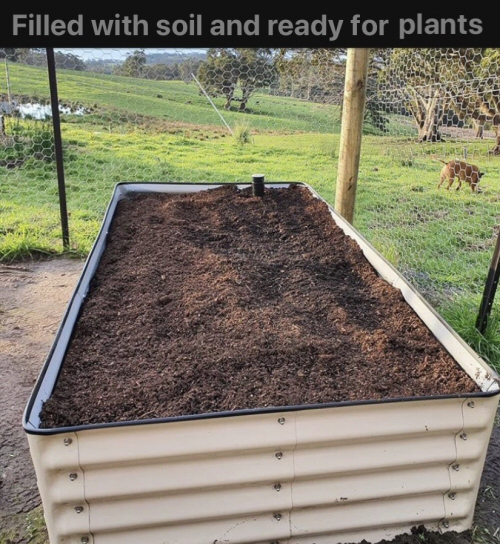Wicking beds are a great idea for a dry continent like Australia, as they make efficient use of an increasingly scarce resource, our precious water. With droughts becoming increasingly frequent, wicking bed systems are becoming popular. They also help time poor gardeners, as they cut the time spent in watering. They are usually made as a raised self contained bed or container so that the overflow drainage will work, so this also helps older or less mobile gardeners who find it hard to bend or to get up, but they can also be made on a mound of earth with the same principles in play. As the main source of water is at the bottom rather than in the top layer of soil, it encourages the roots downwards, so that plants make full use of all the soil and nutrients in the bed.
The principle that wicking beds use is capillary action.Dip the bottom of a dry towel into water, and watch the water rise up the towel….this is capillary action at work. Cohesive force makes water molecules want to stick together, which is why water will travel upwards through porous substances. The trick to wicking beds is to create an easy upwards path for water to travel to plant roots…..letting science do the work!
Constructed with a reservoir of water at the bottom, and lined to prevent water loss, there needs to be a drainage hole part way up from the base, so that the bed does not entirely fill with water in times of heavy rain. The outlet hole needs to be at the same point as the top of the water reservoir. Some people make a second drain hole right at the base with a tap, so the bed can be completely drained, which helps remove any stagnant water, and also gives the ability to flush out salt build up.
The water reservoir at the bottom of the wicking bed can be done two ways. The first is to have a layer of media consisting of natural material such as gravel or scoria (a volcanic rock). The second is from a man made false bottom which allows the soil to be held above. Either of these layers are covered with geotextile fabric or similar so the soil does not infiltrate into the water reservoir, as this would clog it up and not function as well. The aim is for your water layer to hold a good quantity, as this allows a longer time before the need to refill the water. Commercially available water reservoirs can often hold more water than a scoria layer, which will give a longer period before the need to refill in warm months. The other advantage of a plastic reservoir is less weight, which is a good thing for plantings on decks and balconies. Recycled and food grade plastic is a good choice…..though some may balk at the use of plastic, it surely is better to give single use items a new life rather than be buried uselessly in landfill, especially when it helps save on our precious water resources. But however you construct your reservoir layer, a wicking bed is a very efficient way to create garden beds, which will save time and give good results.
As mentioned before, the roots of your plants are being encouraged to seek downwards for their water, but it is good to remember that newly planted seedlings or seeds will need some top watering until the roots get established down into the soil.




